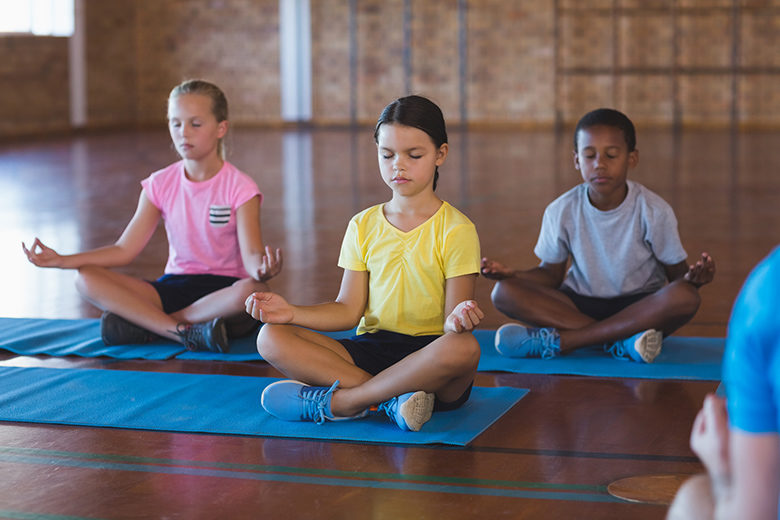
Reading, writing, arithmetic and … running? Absolutely! Think about it: Kids spend about seven hours per day at school. That’s the majority of their waking hours and nearly one-third of the day. Not all of that time is spent on academics, but that doesn’t mean kids aren’t constantly learning. Even during lunchtime and recess, kids are learning, absorbing and practicing new behaviors. That makes these non-academic activities prime opportunities to introduce and encourage healthy habits.
Take, for instance, the cafeteria. It’s a virtual learning lab, with MyPlate-perfect portions served by foodservice staff and offerings carefully curated by school nutrition directors and kids nudging their friends to try new foods by virtue of sheer peer pressure.
Nutrition lessons extend in other areas as well, with the advent of school gardens. Last spring, my daughter’s teacher brought red leaf lettuce from the garden for the class to try. My daughter raved about it and we bought some at the store on our next trip.
Physical education is an opportunity for kids to move their bodies, but it’s not the only time. Some schools incorporate activity breaks in the day — short bursts of stretching or wiggling around to refresh and refocus. Other schools are experimenting with standing desks, pedal desks or switching from standard chairs to stability balls — all in the hopes of helping to stimulate movement, which may help stimulate the brain.
These experimental programs are just that — experiments. But what we do know is that when students are healthy, the benefits are numerous: they perform better on tests, get better grades overall, have fewer missed days of school and behave better in class.
The America’s Healthiest Schools campaign, a program of the Alliance for a Healthier Generation (of which the Academy of Nutrition and Dietetics is a promotional partner), knows the healthiest school environments require involvement from parents, administrators and staff, students and community members. Indeed, the Alliance for a Healthier Generation’s Healthy Schools Program is one of the nation’s largest school-based childhood obesity prevention initiatives, with 35,000 schools involved and reaching more than 20 million students.
The Alliance recently recognized 328 schools as America’s Healthiest Schools, representing 29 states and the District of Columbia. These schools may offer a running club before school, breakfast in the classroom, activity breaks throughout the day and water stations throughout the school for quick fill-ups. They may have eliminated sugary treats or food as rewards or celebrations and may offer a day with extra recess to celebrate that month’s class birthdays.
Whatever these schools are doing, it’s working. Get inspired and learn more about what’s happening at the winningest schools by going to this link and clicking the dots on the map. For this one time, copying is encouraged!




